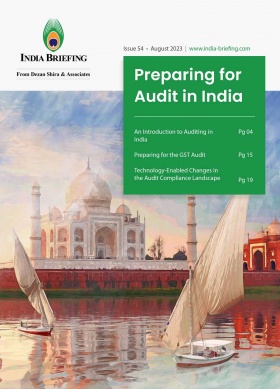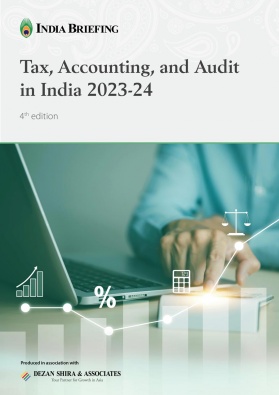India’s Insurance Sector: Leveraging the Digital ‘Bima Sugam’ Portal
The Bima Sugam will function as a ‘one-stop-shop’ electronic marketplace in India’s insurance sector, and aims to promote better customer accessibility. With relaxed FDI norms in the sector, foreign firms stand to gain.
The insurance sector in India is undergoing a major transformation with the launch of Bima Sugam, a portal that aims to simplify the process of buying and claiming insurance policies. Bima Sugam, which means “easy insurance” in Hindi, is an initiative of the sector’s regulator, the Insurance Regulatory and Development Authority of India (IRDAI).
IRDAI has described Bima Sugam as a “game changer” and a “UPI moment” for the insurance sector, referring to the Unified Payments Interface, a digital payment system that has revolutionized the way people transact in India. IRDAI believes that Bima Sugam will create a similar impact on the insurance sector, by making it more accessible, affordable, and transparent for the customers.
What is the Bima Sugam Portal?
It is an online platform where consumers can select a suitable plan from a variety of options provided by multiple corporations. The proposed platform is anticipated to reduce documentation while assisting consumers in identifying the best scheme from among thousands of products and services.
Bima Sugam will fulfill all insurance demands, including those for life, health, and travel insurance. This platform will facilitate the electronic settlement of claims, including health coverage and mortality claims, based on policy data. Initially, it is anticipated that details about insurance schemes will be maintained on the platform via the insurance repository. Following this will be a list of policies. The service providers will be the technological partners in the development and operation of a centralized infrastructure for the provision of all services.
How can Bima Sugam Portal help customers?
The proposed interface would provide policyholders with a singular point of access for managing their insurance coverage. It will provide seamless end-to-end insurance solutions for consumers, including purchase, service, and settlement. These policies will be sold by web aggregators (PolicyX, Policy Bazaar, etc.), brokers (Bajaj Capital, Probe Insurance Broker, etc.), banks, and insurance agents. It will allow insurance companies real-time access to validated and authentic data from multiple contact points. The platform will enable intermediaries and agents to market policies, supply policyholders with services, and decrease paperwork, among other things.
Insurance companies (both general and life insurers) will be significant shareholders in the platform, which will offer facilities to clients via a ‘e-insurance account’ (E-IA). Commissions on policies are anticipated to decline, which will benefit consumers. The cost of purchasing policies will decrease, according to insurers. Currently, there are hundreds of life insurance and non-life insurance plans available but customers are unaware of comparable policies with better benefits or the advantages and disadvantages of various schemes. On a single platform, Bima Sugam will enable customers to identify a suitable scheme for themselves.
The insurance policies will be maintained in the customer’s insurance account, eliminating the need for tangible documents. In addition, the amount of documentation required to purchase a policy will decrease. As a result, the settlement of claims and renewal of policies will also be expedited. The process will resemble demat accounts and online trading.
Electronic marketplace for the insurance sector
According to IRDAI, Bima Sugam is a protocol for an electronic marketplace that will universalize and democratize insurance. This protocol will be connected to India Stack, a set of APIs (application programming interfaces) that enables governments, enterprises, startups, etc. to utilize the distinct digital infrastructure to enable seamless service delivery.
It is anticipated that this e-marketplace will facilitate and empower all insurance stakeholders across the insurance value chain, according to Debasish Panda, chairman of the IRDAI.
Changing customer behavior in India’s insurance sector
According to a recent Swiss Re study, the increase in digital activity caused by the COVID-19 pandemic has led to more Indians purchasing insurance online. Customers have always found purchasing insurance through traditional channels to be a multi-step process that is cumbersome. A study conducted in five main cities in India indicates that insurers can no longer afford to rely solely on offline channels. To capture the interest of the youth cohort, Gen Z and millennials, the sector has needed to transition to the digital domain.
IDC FutureScape predicts that by 2024, 50 percent of all non-life and life insurance policies will be sold via an entirely automated and personalized insurance engine. According to a McKinsey report, 25 percent of the insurance industry will be automated by 2025 with the aid of AI and machine learning techniques. In accordance with IRDAI’s desire to digitize insurance distribution in India, Bima Sugam will assist the industry in scaling the insurance infrastructure in significant ways.
When will the Bima Sugam Portal be launched?
IRDAI originally intended Bima Sugam to be operational by January 2023, but timelines have been delayed, first to August 1 and later to June 2024.
Under the structure of Bima Sugam, both life insurance and general insurance companies are slated to possess a 47.5 percent ownership stake each, while brokerages and agent organizations will each own 2.5 percent.
Although the implementation of Bima Sugam presents inherent challenges, given its reliance on technology and innovation, industry experts remain optimistic about its potential to enhance insurance penetration within the country.
Notably, the aggregate budget allocated to Bima Sugam has undergone an upward revision, increasing from approximately INR 850 million (US$10.20 million) to INR 2 billion (US$24.02 million).
IRDAI has appointed a committee to create the platform and will shortly issue requests for proposals (RFPs) to select a service provider for the platform.
India’s strategy to increase insurance penetration
Bima Trinity plan
The central government is pursuing a three-pronged strategy to increase insurance penetration across all regions in India. These three make up the ‘Bima Trinity’:
- The first component is Bima Sugam.
- The second component is Bima Vistar. It will be a bundled risk cover product that provides defined benefits for each risk and seeks to expedite claim settlements without requiring surveyors.
- The third component is Bima Vaahaks. The third component of the plan entails deploying Bima Vaahaks (carriers) to promote the benefits of insurance products in each gram sabha (village council).
Health Claims Exchange
In addition to Bima Sugam, a different comprehensive instrument on the horizon is the Health Claims Exchange, which aims to streamline the process of health insurance claims for policyholders. This program will expedite claim submission and allow hospitals and policyholders to monitor claims online in real-time, promising a streamlined experience.
Outlook for the Indian insurance sector
The insurance market in India has seen significant expansion in the last 20 years, mostly due to the increased involvement of private enterprises and advancements in distribution capacities. Additionally, notable enhancements in operational efficiency have contributed to this development.
Based on data from S&P Global Market Intelligence, India holds the position of the second-largest insurance technology market in the Asia-Pacific region. This market segment has seen significant venture investments, amounting to a total of US$3.66 billion, with India accounting for 35 percent of these investments.
Private life insurance businesses in India enjoyed a robust growth of 35 percent in premium during the month of March 2023, compared to the same period the previous year. The industry’s premium growth for FY 2022-23 reached 20 percent. Life insurance companies saw a notable increase of 18 percent in premium collections during FY 2023 over FY 2021-22.
According to the most recent statistics from IRDAI, life insurance companies garnered a first-year premium of INR 3.71 trillion (US$44.85 billion) in FY 2022-23, compared to INR 3.14 trillion (US$37.96 billion) in FY 2021-22.
It is projected that the life insurance sector will see a compound annual growth rate (CAGR) of 5.3 percent from 2019 to 2023. In FY 2021, the insurance penetration in India was estimated to be 4.2 percent. Within this, the penetration of life insurance was recorded at 3.2 percent, while the penetration of non-life insurance was at 1.0 percent. India’s insurance density in FY ’21 was recorded at US$78.
It is anticipated that the premiums generated by India’s life insurance sector will amount to INR 24 trillion (US$317.98 billion) by FY 2031.
During the period spanning from April 2021 to March 2022, non-life insurers recorded gross premiums written off amounting to INR 2.20 trillion (equivalent to US$28.14 billion), indicating a growth rate of 11.1 percent compared to the same period in the previous fiscal. In May 2022, the non-life insurance category had a total premium earning of INR 366.80 billion (US$ 4.61 billion), indicating a growth of 24.15 percent in comparison to the same period the previous year.
The market share held by private sector enterprises in India’s general and health insurance market saw growth increase from 48.03 percent in FY 2020 to 49.31 percent in FY 2021. In May 2021, there was a significant increase of 66.6 percent in the gross premium of six independent private sector health insurance firms. The total amount reached INR 14.06 billion (equivalent to US$191.84 million), compared to the previous figure of INR 8.44 billion (equivalent to US$115.12 million).
About Us
India Briefing is produced by Dezan Shira & Associates. The firm assists foreign investors throughout Asia from offices across the world, including in Delhi and Mumbai. Readers may write to india@dezshira.com for more support on doing business in India.
We also maintain offices or have alliance partners assisting foreign investors in Indonesia, Singapore, Vietnam, Philippines, Malaysia, Thailand, Italy, Germany, and the United States, in addition to practices in Bangladesh and Russia.
- Previous Article India-Baltic Economic Synergy Rooted in Tech and Innovation
- Next Article Airbnb’s Contribution to India’s GDP Highlights New Trends in Travel and Hospitality Industry









